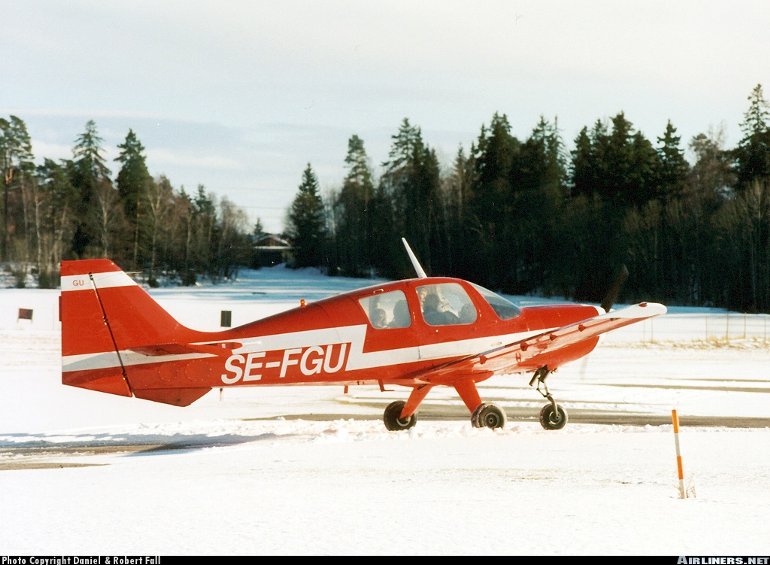Aircraft Technical Data
Beagle B-121 Pup

| Details | |
| Country of Origin | United Kingdom |
| Type | Two, three and four place light aircraft |
| History | The Pup was one of two new designs to be produced by the British Executive and General Aviation Ltd or Beagle company, which was formed in October 1960 following the merger of Auster and Miles. The Pup evolved from the Miles M-117 project, which was to have made extensive use of plastics. A range of (conventional construction) Pups was planned, from a 75kW (100hp) two seat trainer through to retractable undercarriage four seaters, a light twin and a fully aerobatic 155kW (210hp) military trainer, the Bull Pup. All would have featured metal construction. The Pup made its first flight on April 8 1967 and deliveries of the initial Pup 100 began a year later in April 1968. The Pup is one of the few light aircraft to feature control sticks and not control columns. In the meantime Beagle had flown the first of the more powerful Pup 150s in October 1967. The 150 featured a 110kW (150hp) engine, as the designation reflects, and seating for an extra adult. Another more powerful variant originally designed in response to an Iranian Civil Air Training Organisation requirement was the Pup 160. The Pup 160 featured a 120kW (160hp) IO-320 Lycoming, but only nine were built. Continuing financial difficulties finally forced Beagle to close its doors in January 1970 after building 152 Pups, despite holding orders for an additional 276. As a result plans for the extended Pup based family came to nought. A further 21 near complete were subsequently assembled. The B-125 Bulldog military basic trainer development first flew in May 1969. Scottish Aviation (which took over the design following Beagle's collapse) built 328 150kW (200hp) Lycoming IO-360 powered Bulldogs for a number of air forces, including Britain's Royal Air Force. Scottish Aviation became part of British Aerospace in the late 1970s. |
| Powerplants | 100 - One 75kW (100hp) Rolls-Royce Continental O-200-A flat four piston engine driving a two blade fixed pitch propeller. 150 - One 110kW (150hp) Lycoming O-320-A2B flat four. 160 - One 120kW (160hp) Lycoming IO-320. |
| Performance | 100 - Max speed 204km/h (110kt), max cruising speed 190km/h (103kt), economical cruising speed 153km/h (83kt). Initial rate of climb 575tft/min. Range with no reserves 916km (495nm). 150 - Max speed 222km/h (120kt), max cruising speed 211km/h (114kt), economical cruising speed 175km/h (95kt). Initial rate of climb 800ft/min. Range with no reserves 708km (382nm), range with optional additional fuel and no reserves 1019km (550nm). |
| Weights | 100 - Empty 482kg (1063lb), max takeoff 725kg (1600lb). 150 - Empty 522kg (1151lb), max takeoff 873kg (1925lb). |
| Dimensions | 100 - Wing span 9.45m (31ft 0in), length 6.99m (22ft 11in), height 2.29m (7ft 6in). Wing area 11.2m2 (120sq ft). 150 - Same except length 7.06m (23ft 2in). |
| Capacity | 100 - Two side by side, plus two children behind. 150 - Three adults and one child. |
| Production | 173 Pups built, consisting of 66 Pup 100s, 98 Pup 150s, and 9 Pup 160s. |
| Related Links | Beagle B-121 Pup |
The backbone of this section is from the The International Directory of Civil Aircraft by Gerard Frawley and used with permission. To get your own copy of the book click here. |
|








